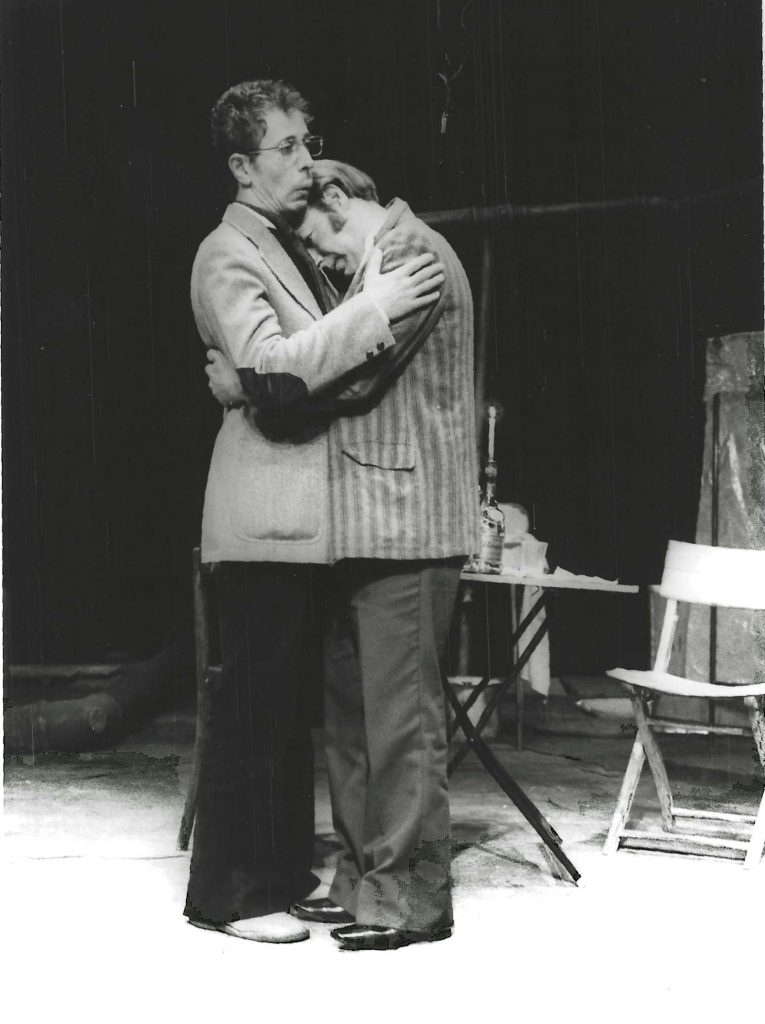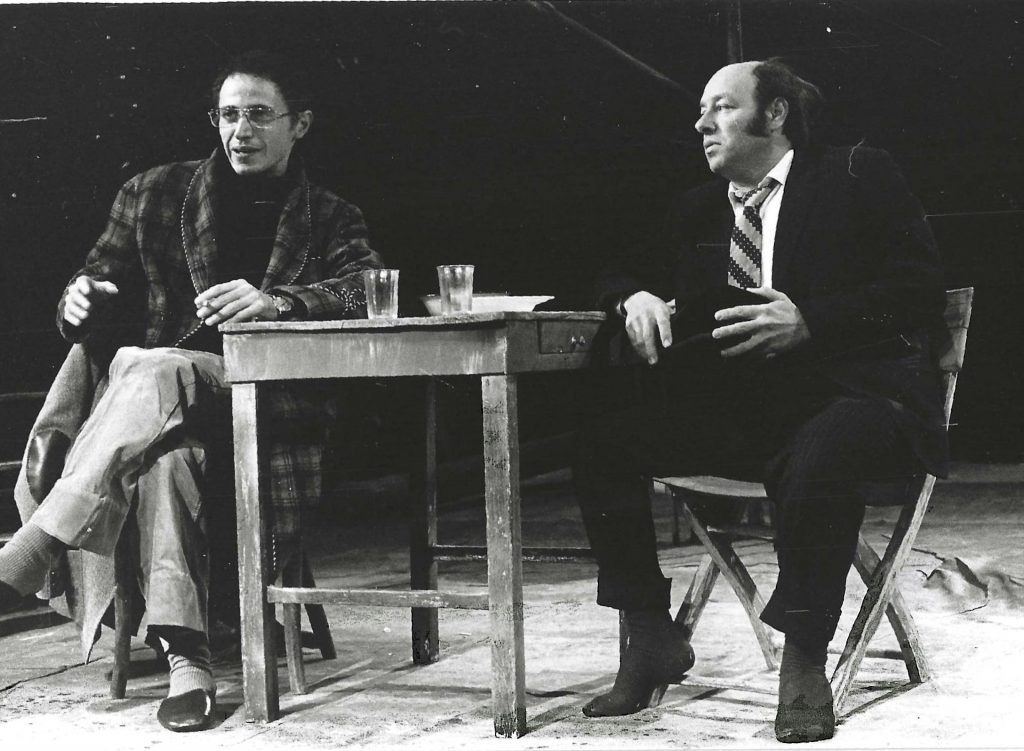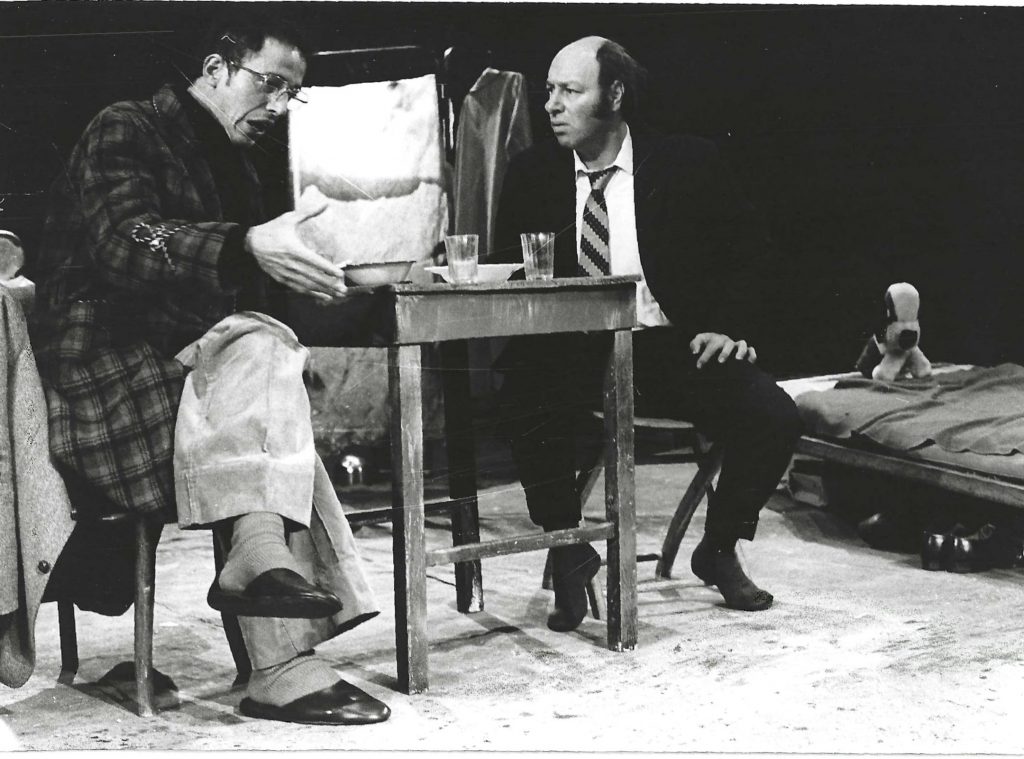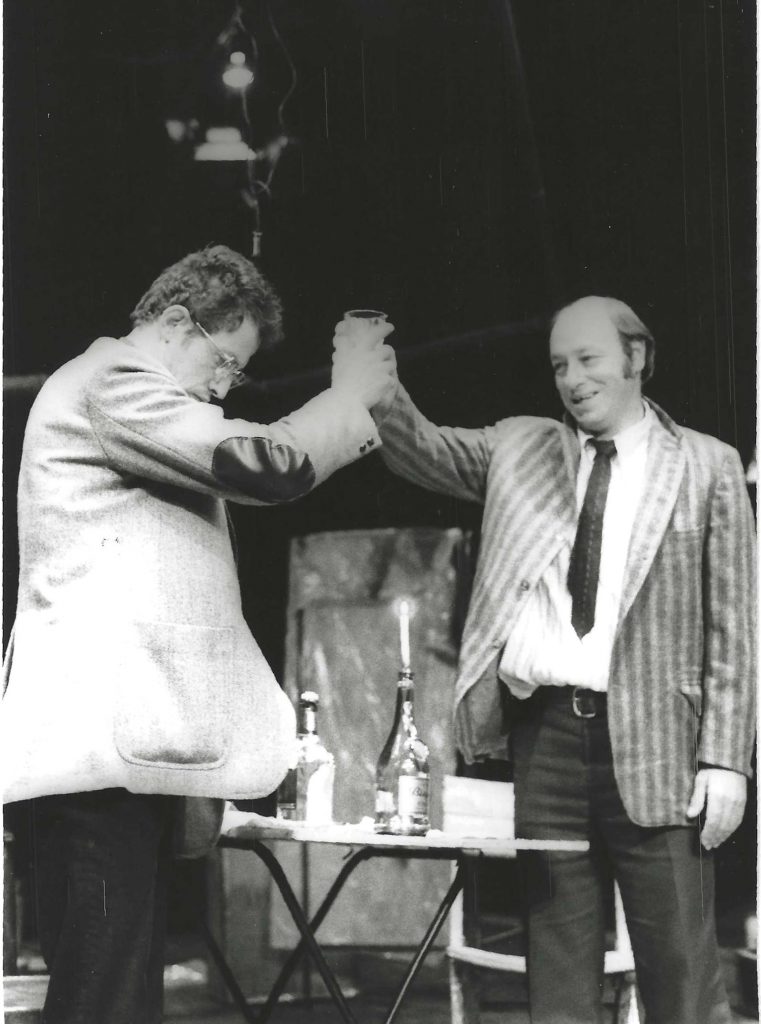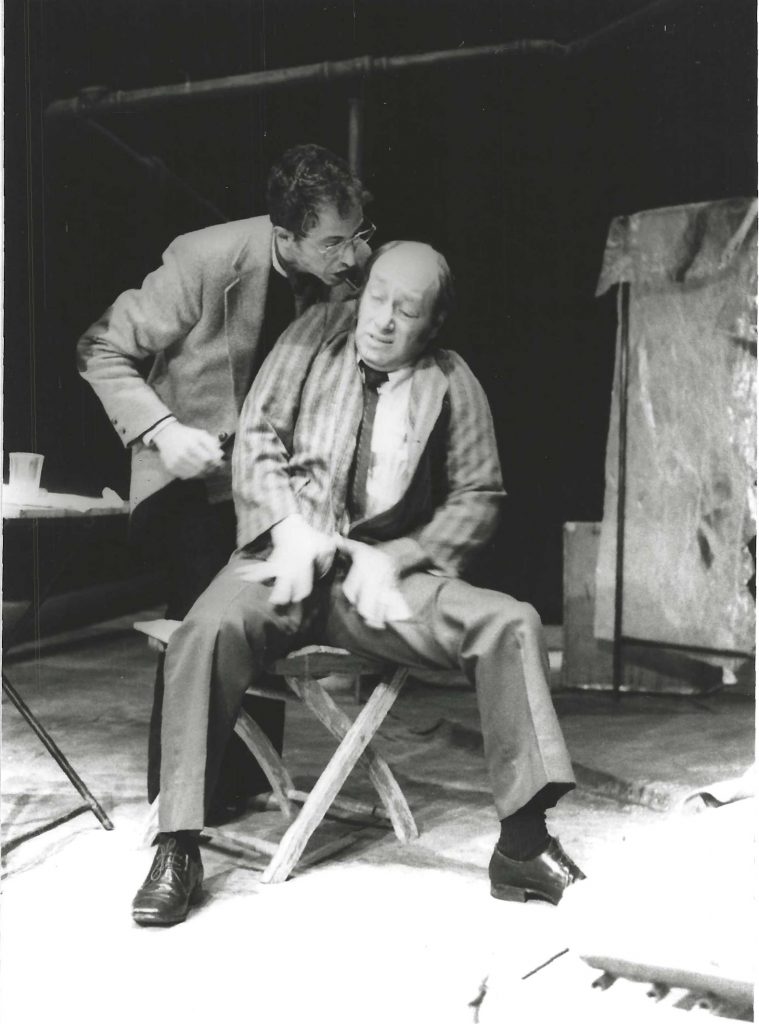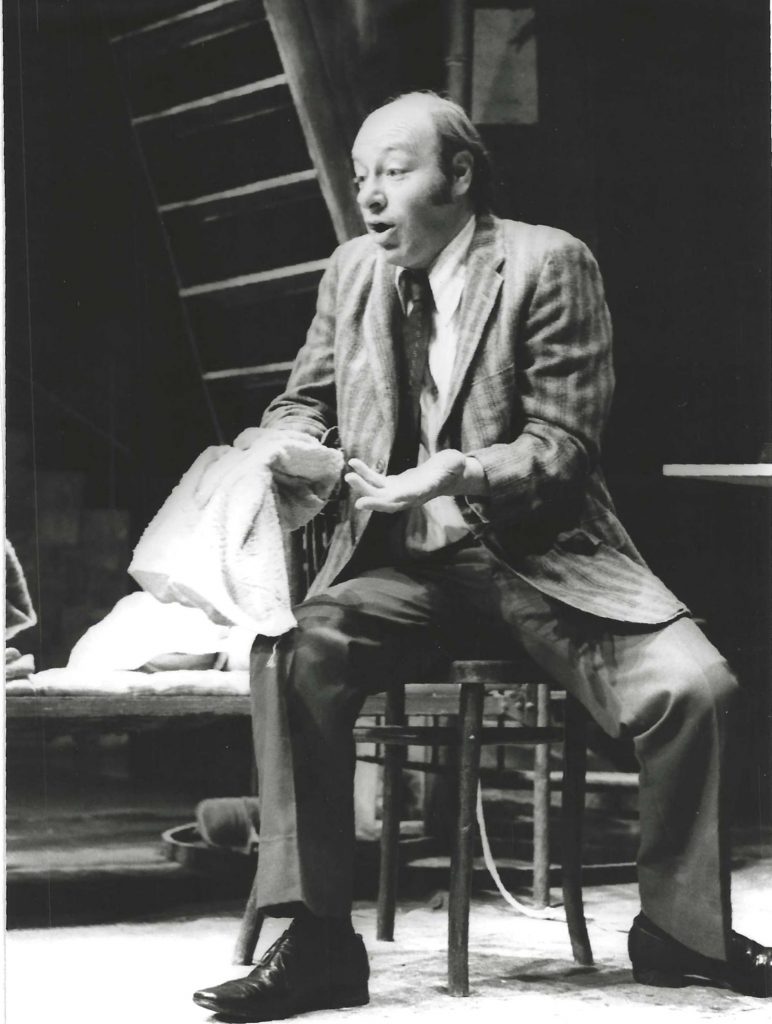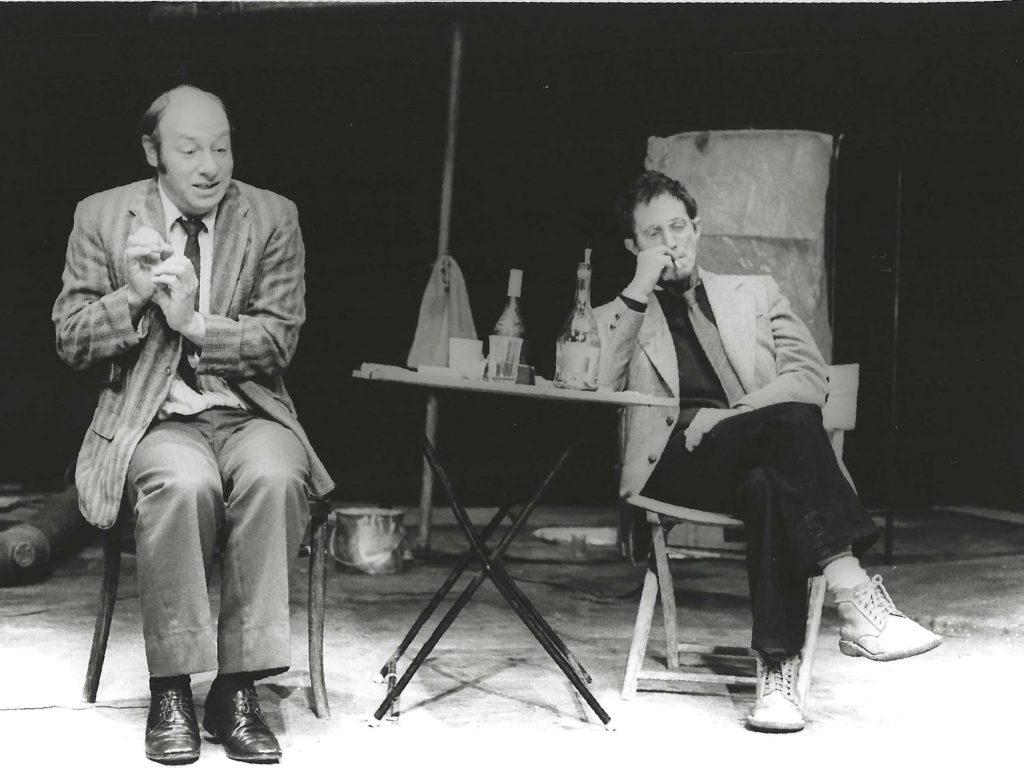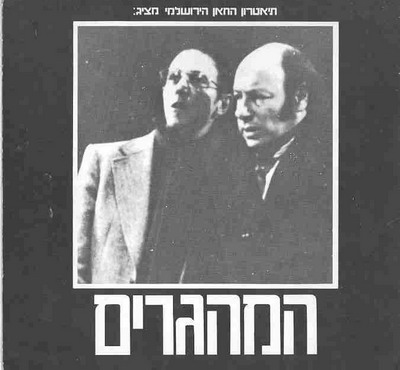Directed and translated by: Michal Govrin
Music: Joseph Tal
Costume and set: Moshe Sternfeld
Lighting: Ben-Zion Monitz
Motion: Rut Ziv-Eyal
Cast:
Shabtai Konorty -AA
Avinoam Mor-Haim -ZZ
The time is the end of the Sixties, the beginning of the Seventies. Millions of workers are drawn to the West to serve its booming economy: Spaniards, Portuguese, Italians, Yugoslavs, Turks, Poles, Greeks, Arabs. They live in cheap housing, where up to eighteen men sleep in one room; when morning comes, eighteen night-workers take their places and sleep in the same beds during the day. They are unskilled manual laborers with no social security, even in the most enlightened of democratic states. At the same time a wave of artists, intellectuals and scientists from Eastern Europe arrives in the West, including Roman Polanski, Milos Forman, Jan Kott, Milan Kundera, Alexander Solzhenitsyn, Mstislav Rostropovich and many others. Slawomir Mrozek is among them.
This period serves as the backdrop of The Emigrants. In the play, two emigrants from the same country spend New Year’s Eve together. Their country of origin could be any one of many. At present they are living in one of the West’s big capital cities, in the basement of a large apartment building. One of them, ZZ, is a peasant who has come to the West to make money, the other, AA, is an intellectual and writer. One is slave to his own materialistic desires, the other apparently motivated by a sense of vocation to write a book on the slavery of man, a book that will become a key to liberty.
In the polar conflict between these two characters, each one is exposed layer by layer, until the moment at which they stand denuded of all their masks of pretense and of castles in the air, in the full presence of their insoluble problems: rootlessness, the impossibility of communication between classes, and the question of success and failure that is, momentarily, placed starkly before them.
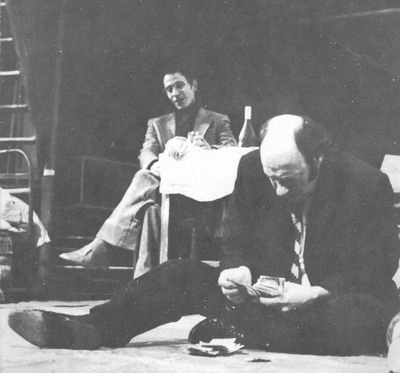
Which of the two will prevail?
While the play has certain autobiographical elements, which could have led us towards an answer to this question, it transpires that these elements exist in each of the polar human extremes. They may be seen in the intellectual, but no less in the farm laborer, caught up in the moments in which unchallenged values of humanism and earthiness become unbearably oppressive.
